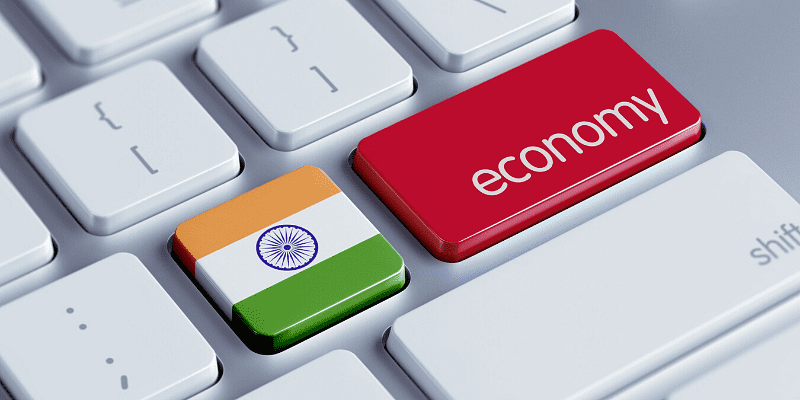
Prime Minister Narendra Modi came up with a roadmap of making India a $5 trillion economy by 2024. With the corporate tax rate being cut from 30 percent to 22 percent, setting up Rs 25,000 crore of AIF fund for the MSMEs, and several other steps, India was well on the way.
In today’s article, we talk about the steps and possible critical enablers once the COVID-19 scare evaporates.
What is the current status of the Indian economy?
The year 2019 brought about a lot of adversity for the Indian economy. The predicted GDP growth rate went down from 7.2 percent to 5 percent. The production fell tremendously, and the auto industry saw an unexpected slip too.
To put numbers in context, India has a per capita income of $5,350. In comparison, the US reported a PCI of $65,112 for the year ending 2019. India requires a mix of financialisation, urbanisation, skilling, and industrialisation to revive.
Key sectors that will require a stimulus
Last month, the Indian government sanctioned a Rs 20 lakh crore stimulus for the economy. Money alone will not be enough to bring the country out of the rut it is in, and we believe that it will require a fresh wave of policies to revive it.
Zooming in further, we find that there are several sectors that will require some stimulus for them to claw back, such as –
- MSMEs
- Travel and hospitality
- Aviation
- Electricity
- Automobile and auto components industry
- Textiles and fashion
Key enablers to help boost the economy
The Indian economy will need some to improve in certain aspects to be able to get back on track. Here are the key enablers that will drive the $5 trillion dream –
Focus on local manufacturing
It is the right time for India to go #VocalforLocal. The PM emphasised on the need to be ‘Aatmanirbhar’, and it can achieve so only when the governments collaborate and bring in necessary change at the base level.
Tackling the Chinese situation
Most countries, including the US, believe that China is the reason behind the widespread pandemic. It has created a negative sentiment around them and has allowed the other countries to benefit from the situation. Not only that, but India also depends a lot on China for its imports, which must be reduced gradually.
Dependable taxation policies
One major gripe that most companies have with the Indian ecosystem is the continually changing taxation policies.
If the Government wants to take advantage of the current global scenario, it must set up a dependable structure and ensure that there won't be any changes.
Better availability of land and infrastructure
India needs wider availability of clean land with access to requisite infrastructure to woo more FDI and influx of latest technology. The central government, in partnership with states, must create zones that provide these resources affably.
Catering to the labour community
The scale of skilling labour in India has been limited since time immemorial. Most of the skilled workers working in a factory come from Odisha, Bihar, or nearby states. The pandemic has forced them to go back to their hometown, and there is an increasing reluctance to go back.
Capital influx
FDI is a significant boost for every economy, and India is no different. In the year ended 2019, the same stood at $49.97 billion.
Providing more impetus on bringing foreign currency will also help the country in acquiring the latest technology too. The shift to flow-based lending will also help in improving the capital influx.
More focus on digitisation
The process of digitisation had started long back in India, and the pandemic reiterated the need for it.
Hindrances lenders may face post-pandemic
The Indian recovery would be in two stages. The priority would be to get the essential sectors back on track. It would take at least a year before it can move to the next stage. The second stage would focus on reviving the other sectors, such as travel and others.
Trust would be a big issue when the financiers invest in businesses post-coronavirus. The moratorium period announced by the government has been a jaw-breaker for most small NBFCs. Once all of it gets back to normal, it is the government’s job to assure that their money will be in safe hands.
Conclusion
Reviving an economy doesn’t involve a single step. Especially when it comes to a diverse economy like India, the government and the private sector must be careful and draw a plan.
Impetus on local manufacturing, improving the overall condition of MSMEs, and the safety of the labour community are the few steps that would help India step back on its way to becoming a $5 trillion economy.
(Edited by Saheli Sen Gupta)
(Disclaimer: The views and opinions expressed in this article are those of the author and do not necessarily reflect the views of YourStory.)
Want to make your startup journey smooth? YS Education brings a comprehensive Funding Course, where you also get a chance to pitch your business plan to top investors. Click here to know more.
Link : https://yourstory.com/2020/07/india-track-build-5-trillion-economy-dream-covid-19
Author :- R N Iyer ( )
July 17, 2020 at 02:10PM
YourStory


